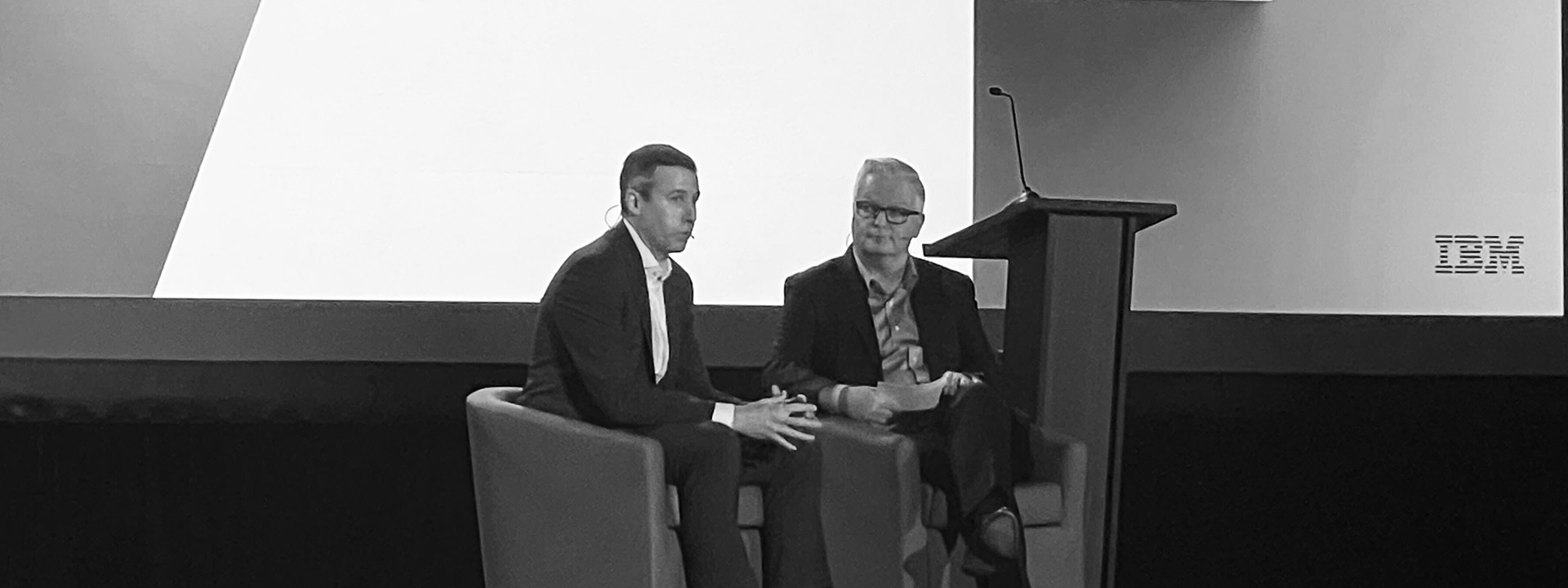Latest News
Public and Private Sectors Must Collaborate in the New Cyber Era

It was great to be back in person recently gathering with new and old colleagues at the Financial Services Information Sharing and Analysis Center (FS-ISAC) Spring Summit. After two long years, it...
It was great to be back in person recently gathering with new and old colleagues at the Financial Services Information Sharing and Analysis Center (FS-ISAC) Spring Summit. After two long years, it was inspiring to connect with leaders in the financial services space and hear about their needs as they contend with the evolving threat landscape.

Chris DeRusha, U.S. Federal Chief Information Security Officer and Deputy National Cyber Director and Howard Boville, Head of IBM Cloud Platform
I had the opportunity to take part in a fireside chat with Chris DeRusha, U.S. Federal Chief Information Security Officer and Deputy National Cyber Director. We discussed everything from the ongoing risks associated with third-party suppliers to evolving cybersecurity, compliance and data laws, to what framework can help strengthen a company’s security posture.
We both agree that a compromised organization will sink or swim on its cyber threat detection and response timing and capabilities. Working together, the public and private sectors can protect digital information and systems to prevent business disruptions while enabling transformation.
Chris’s role and experience allowed the audience a first-hand account of what the acceleration of high-profile, cyber-attacks mean for the government. He offered his perspective on how the public sector can manage cybersecurity and critical infrastructure programs.
“Our risk management approach is necessary and helpful in many regards, but it isn't sufficient, especially post SolarWinds, where we all thought we were more secure than we were. And maybe even if you were that good, you weren't good enough,” Chris said. “You can use risk proxies, you can reduce the attack surface, you can use automated needs. So that's what we're doing. We're really embracing all the best in that space for agencies to use.”
Chris weighed in on the federal government’s initiative to make zero-trust, the strategic initiative that helps prevent successful data breaches by eliminating the concept of trust from an organization's network architecture, a key priority as implemented by an executive order from the White House last spring. In keeping with this new strategy, Chris said, “We're making a big bet on zero trust … One of the things we're doing is really pushing for secure cloud with the development of technical reference architecture guides.”
When it comes to compliance, we all need to ensure we have the proper cybersecurity controls, laws, rules and regulations in place to protect our data. For our part, the IBM Financial Services Cloud community, an open source project to capture all risks related to cybersecurity, compliance and data laws, was started in 2020 with eight banks and has now grown to 90+ members from 60 banks.
I want to thank Chris for joining me at FS-ISAC. What we both agree is that the faster an organization can detect that they have been compromised, the faster they can respond and mitigate the impact.
The federal government and the private sector need to work together to create cybersecurity policies that are adaptable to rapidly emerging threats, are based on effective risk management and tap public-private partnerships. It is critical to ensure we are fighting against the constantly evolving cyber and compliance threat landscape to protect the world’s data.
What are you doing to ensure your organization has the appropriate controls and frameworks in place to mitigate risk?